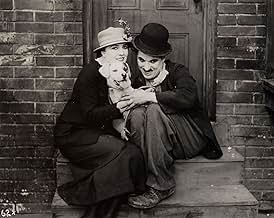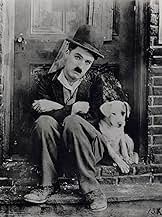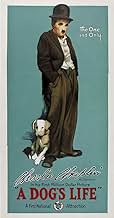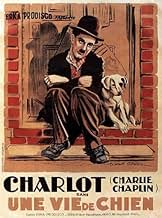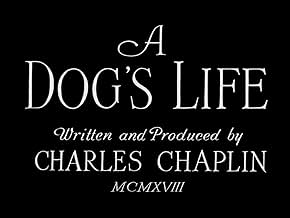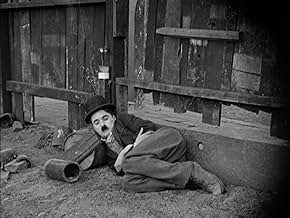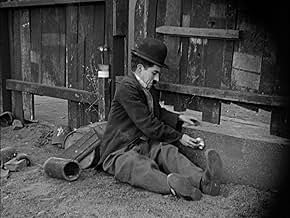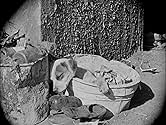AVALIAÇÃO DA IMDb
7,6/10
10 mil
SUA AVALIAÇÃO
O Vagabundo e seu companheiro canino lutam para sobreviver no centro da cidade.O Vagabundo e seu companheiro canino lutam para sobreviver no centro da cidade.O Vagabundo e seu companheiro canino lutam para sobreviver no centro da cidade.
Edna Purviance
- Bar Singer
- (não creditado)
Dave Anderson
- Bartender
- (não creditado)
Bert Appling
- Unemployed Man
- (não creditado)
Albert Austin
- Crook
- (não creditado)
Henry Bergman
- Fat Unemployed Man
- (não creditado)
- …
Alva D. Blake
- Man in Dance Hall
- (não creditado)
Mel Brown
- Employment Agency Clerk
- (não creditado)
- …
Minnie Chaplin
- Dance-Hall Dramatic Lady
- (não creditado)
Syd Chaplin
- Lunchwagon Owner
- (não creditado)
Dorothy Cleveland
- Woman in Dance Hall
- (não creditado)
Slim Cole
- Unemployed Man
- (não creditado)
Margaret Cullington
- Woman in Dance Hall
- (não creditado)
Billy Dill
- Man in Dance Hall
- (não creditado)
Margaret Dracup
- Woman in Dance Hall
- (não creditado)
Jack Duffy
- Man in Dance Hall
- (não creditado)
Robert Dunbar
- Old Man in Dance Hall
- (não creditado)
Ella Eckhardt
- Woman in Dance Hall
- (não creditado)
Enredo
Você sabia?
- CuriosidadesThis was Charles Chaplin's first film for First National Pictures under a $1M contract where Chaplin had full creative control over his films for the first time.
- Erros de gravaçãoDuring the fight at the lunch cart, one of the props holding up the awning gets knocked away. In subsequent shots, the prop is back in place.
- Citações
Title Card: When dreams come true.
- ConexõesEdited into Carlitos em Desfile (1959)
Avaliação em destaque
Just like his little tramp alter ego, Charlie Chaplin liked to think big, and had always aimed to extend the scale and scope of his pictures, never content to be a two-reel sideshow. At 35 minutes, A Dog's Life could hardly be described as his first full-length feature, but it arguably represents his break away from shorts.
Just the opening shot of A Dog's Life shows how Chaplin is starting to inject some grand sweep into his storytelling. The camera begins amid city rooftops, tilting down to reveal Charlie sleeping amid the rubbish behind a ramshackle fence. The way this purpose-built set is shot demonstrates how Chaplin was as much a "proper" director as a comic. He several times has a shabby sign advertising "rooms" visible in the background – a subtle reminder that the tramp is too poor even for the cheapest accommodation.
It's a nice touch how Charlie's canine friend is introduced in a handful of cutaways during this opening scene – treating him as a real character rather than just a plot device. But this is not to the detriment to his human companions, and indeed leading lady Edna Purviance gets a more substantial part than she did in many of the shorts. She makes a really great character here, giving an impression of a naïve but feisty youngster, certainly more than just a token female. It's this kind of characterisation that gives A Dog's Life the kind of comprehensive structure of a feature film, as opposed to a comedy short in which people just turn up on screen for a bit of funny business.
On a quick side-note, this is the earliest Chaplin picture which features a score written by him (although since he wrote the music in retrospect some decades later it's not the first he wrote). It's another testament to the breadth of his genius, showing both considerable musical ability as well as his own irreverent personality. Numbers like the dance hall rag are of course very "silent comedy", but pieces like the opening theme have a truly deep and epic feel to them. Even here though, the Chaplin cheekiness shines through, with different parts of the orchestra playing off each other in a kind of question-and-answer routine.
Chaplin would repeat this "little companion" routine, swapping dog for tot in his first genuine full-length feature The Kid. A Dog's Life remains a worthy predecessor, part of the comedian's ever upward trajectory at this point in his career. It would take more battling with studio heads for Chaplin to get his ideas fully realised, but it was pictures like this that began to get silent comedy taken seriously.
Just the opening shot of A Dog's Life shows how Chaplin is starting to inject some grand sweep into his storytelling. The camera begins amid city rooftops, tilting down to reveal Charlie sleeping amid the rubbish behind a ramshackle fence. The way this purpose-built set is shot demonstrates how Chaplin was as much a "proper" director as a comic. He several times has a shabby sign advertising "rooms" visible in the background – a subtle reminder that the tramp is too poor even for the cheapest accommodation.
It's a nice touch how Charlie's canine friend is introduced in a handful of cutaways during this opening scene – treating him as a real character rather than just a plot device. But this is not to the detriment to his human companions, and indeed leading lady Edna Purviance gets a more substantial part than she did in many of the shorts. She makes a really great character here, giving an impression of a naïve but feisty youngster, certainly more than just a token female. It's this kind of characterisation that gives A Dog's Life the kind of comprehensive structure of a feature film, as opposed to a comedy short in which people just turn up on screen for a bit of funny business.
On a quick side-note, this is the earliest Chaplin picture which features a score written by him (although since he wrote the music in retrospect some decades later it's not the first he wrote). It's another testament to the breadth of his genius, showing both considerable musical ability as well as his own irreverent personality. Numbers like the dance hall rag are of course very "silent comedy", but pieces like the opening theme have a truly deep and epic feel to them. Even here though, the Chaplin cheekiness shines through, with different parts of the orchestra playing off each other in a kind of question-and-answer routine.
Chaplin would repeat this "little companion" routine, swapping dog for tot in his first genuine full-length feature The Kid. A Dog's Life remains a worthy predecessor, part of the comedian's ever upward trajectory at this point in his career. It would take more battling with studio heads for Chaplin to get his ideas fully realised, but it was pictures like this that began to get silent comedy taken seriously.
- Steffi_P
- 14 de jun. de 2010
- Link permanente
Principais escolhas
Faça login para avaliar e ver a lista de recomendações personalizadas
Detalhes
- Data de lançamento
- País de origem
- Centrais de atendimento oficiais
- Idiomas
- Também conhecido como
- A Dog's Life
- Locações de filme
- Empresa de produção
- Consulte mais créditos da empresa na IMDbPro
- Tempo de duração33 minutos
- Cor
- Mixagem de som
- Proporção
- 1.33 : 1
Contribua para esta página
Sugerir uma alteração ou adicionar conteúdo ausente

Principal brecha
By what name was Vida de Cachorro (1918) officially released in Canada in English?
Responda
